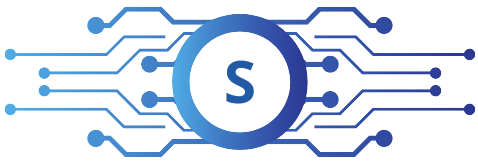
Artificial Intelligence (AI) has emerged as a transformative technology, revolutionizing various industries and impacting our daily lives. In this comprehensive review, we will delve into the different aspects of AI, including its history, key tasks, popular websites, and practical applications. Whether you’re a tech enthusiast or someone curious about AI, this review will provide you with valuable insights into the world of artificial intelligence.
History of AI: The journey of AI dates back to the mid-20th century when researchers began exploring the concept of intelligent machines. From early symbolic AI and expert systems to the emergence of machine learning and neural networks, the history of AI showcases significant milestones and breakthroughs. We will explore the contributions of influential figures, such as Alan Turing and John McCarthy, and trace the evolution of AI from its early beginnings to the present day.
Key Tasks in AI: AI encompasses a wide range of tasks that simulate human intelligence. We will explore fundamental tasks, including machine learning, natural language processing, computer vision, and robotics. Understand the principles behind these tasks and discover how AI algorithms learn, understand, interpret, and interact with the world around us.
Prominent AI Websites and Platforms: The AI community thrives on various websites and platforms dedicated to AI research, news, and resources. We will highlight notable websites such as Arxiv, OpenAI, Towards Data Science, and AI-related communities on platforms like GitHub and Kaggle. Explore these platforms to access research papers, tutorials, code repositories, and engage with a vibrant community of AI enthusiasts and experts.
Practical Applications of AI: AI has found its applications in numerous industries, ranging from healthcare and finance to transportation and entertainment. Discover how AI is revolutionizing healthcare with medical diagnosis systems and personalized treatments. Learn about AI-powered chatbots, recommendation systems, and virtual assistants that enhance customer experiences. Explore autonomous vehicles, smart home devices, and innovative applications of AI in diverse domains.
How to Use AI: Interested in exploring AI yourself? We will provide an overview of popular programming languages and frameworks used in AI development, such as Python, TensorFlow, PyTorch, and scikit-learn. Understand the basics of getting started with AI development, accessing open-source AI tools and libraries, and leveraging online courses and resources to enhance your AI skills.
Artificial Narrow Intelligence (ANI) is the most basic type of AI. It is designed to perform a specific task, such as playing chess or Go, or translating languages. ANI systems are not capable of general intelligence, and they cannot learn or adapt to new situations.
- History: The first ANI systems were developed in the 1950s and 1960s. One of the earliest examples is the Logic Theorist, which was developed by Allen Newell and Herbert Simon at Carnegie Mellon University. The Logic Theorist was able to prove 38 of the first 52 theorems in Whitehead and Russell’s Principia Mathematica.
- Tasks: ANI systems are used in a wide variety of applications, including:
- Game playing: ANI systems are used to play games such as chess, Go, and Jeopardy.
- Natural language processing: ANI systems are used to translate languages, write different kinds of creative content, and answer your questions in an informative way.
- Image recognition: ANI systems are used to identify objects in images and videos.
- Spam filtering: ANI systems are used to identify and filter out spam emails.
- Websites: There are many websites that offer ANI services, such as:
- Google Search: Google Search uses ANI to index and rank websites, so that you can find the information you need quickly and easily.
- Siri: Siri is an ANI-powered virtual assistant that can help you with tasks such as setting alarms, making appointments, and sending text messages.
- Amazon Alexa: Amazon Alexa is another ANI-powered virtual assistant that can help you with tasks such as playing music, getting news, and controlling smart home devices.
- How to use: ANI systems can be used in a variety of ways. For example, you can use Google Search to find information on any topic, or you can use Siri or Amazon Alexa to get help with tasks such as setting alarms or making appointments.
Artificial General Intelligence (AGI) is a hypothetical type of AI that would have the ability to perform any intellectual task that a human being can. AGI systems would be able to learn and adapt to new situations, and they would not be limited to a specific task or set of tasks.
- History: The concept of AGI has been around since the early days of AI research. However, no AGI systems have been developed yet.
- Tasks: AGI systems would be able to perform any task that a human being can, such as:
- Driving a car
- Writing a novel
- Solving complex mathematical problems
- Understanding and responding to human emotions
- Websites: There are no websites that offer AGI services yet.
- How to use: AGI systems would not be available to the public until they are developed. However, once they are developed, they could be used for a variety of purposes, such as:
- Assisting with healthcare
- Improving education
- Automating tasks in the workplace
- Creating new forms of art and entertainment
Artificial Superintelligence (ASI) is a hypothetical type of AI that would be more intelligent than any human being. ASI systems would be able to solve any problem that a human being can, and they would be able to learn and adapt to new situations at an exponential rate.
- History: The concept of ASI has only been around for a few decades. However, some experts believe that ASI is a real possibility, and that it could be developed within the next century.
- Tasks: ASI systems would be able to perform any task that a human being can, and they would be able to do it much better. For example, ASI systems could solve complex mathematical problems in seconds, or they could write novels that are more creative and insightful than anything that a human being could write.
- Websites: There are no websites that offer ASI services yet.
- How to use: ASI systems would not be available to the public until they are developed. However, once they are developed, they could have a profound impact on society. For example, ASI systems could be used to solve some of the world’s most pressing problems, such as climate change and poverty. However, it is also possible that ASI systems could pose a threat to humanity, if they are not used responsibly.
Artificial Intelligence continues to evolve and reshape the world around us. By understanding the history, key tasks, popular websites, and practical applications of AI, you can appreciate its transformative potential. Whether you are an AI enthusiast, a professional seeking to implement AI solutions, or simply curious about the field, this comprehensive review serves as a gateway to explore and understand the exciting world of artificial intelligence.



